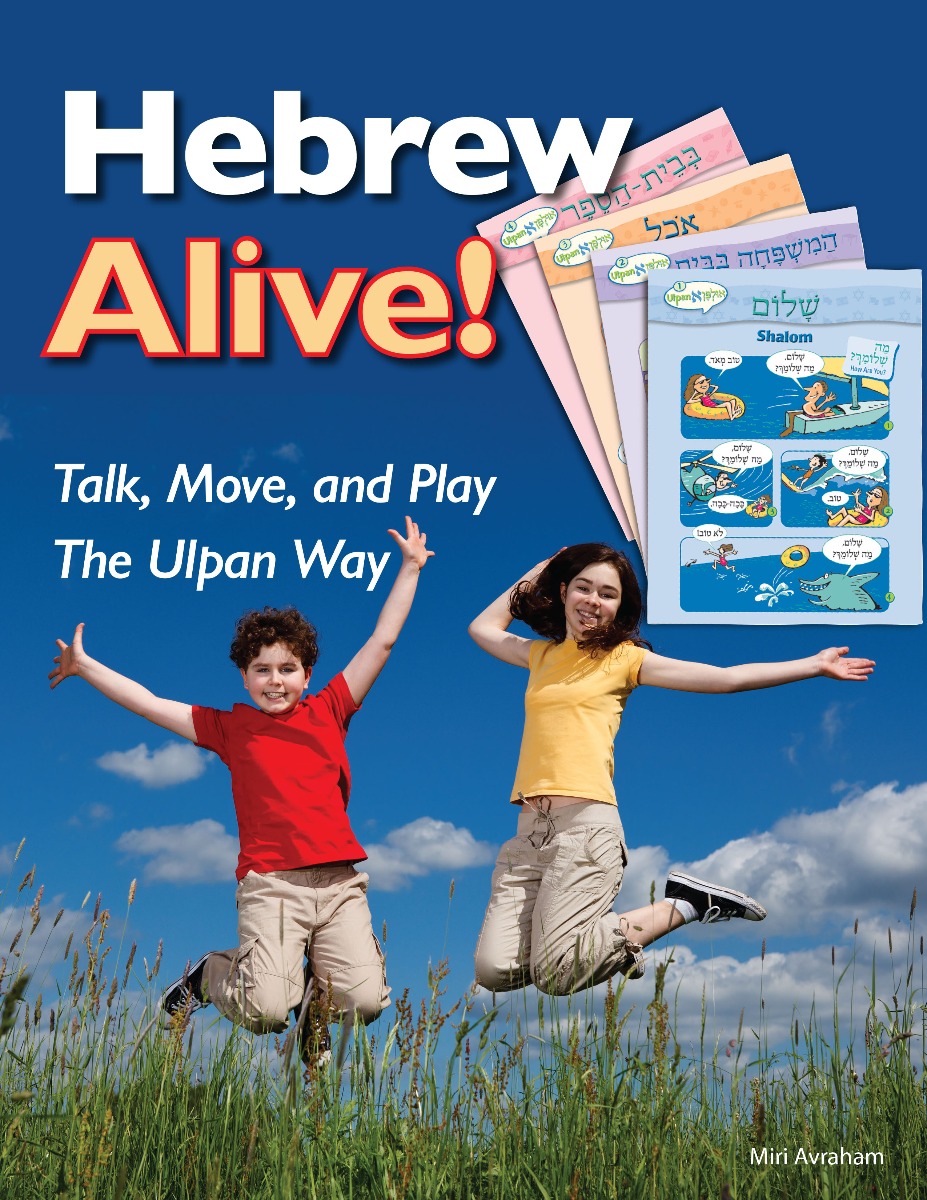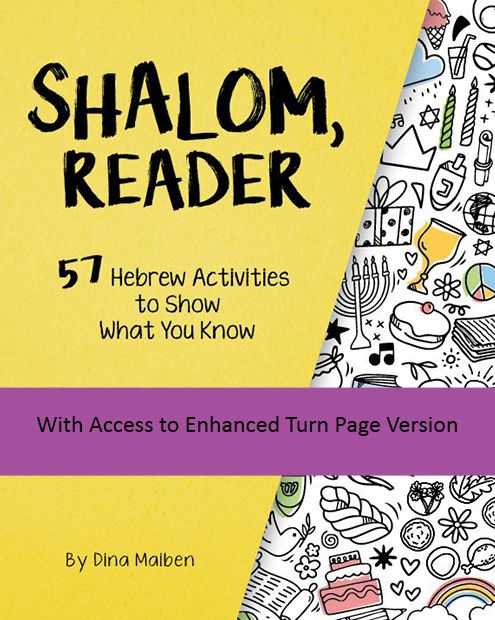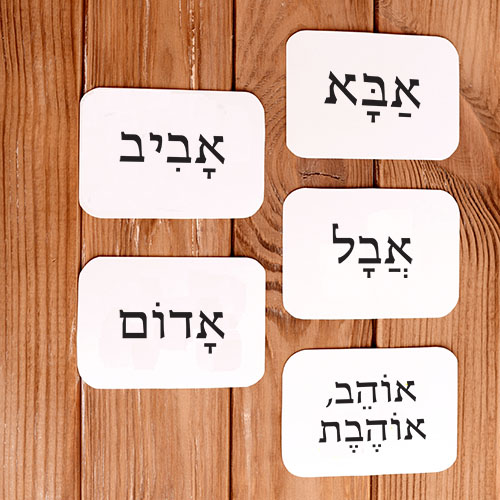Active Ways to Support Hebrew Learning
The beginning of a new school year is a great time to review learners' Hebrew skills, and to plan how you will support their learning all year long.
Research shows that effective Hebrew learning comes from regular exposure to authentic language in various ways, including listening and speaking. Further, the best language connections come from using Hebrew in creative ways.
Here are some simple engaging ways to practice in small bites.
Movement-Based Conversational Hebrew
 Hebrew is a real, living, dynamic language. Bring 10 minutes of active fun to your sessions with movement-based actitivities from Hebrew Alive! Talk, Move, and Play the Ulpan Way. Designed as a guide for teachers, and organized into short mini-lessons, Hebrew Alive gives children functional language to practice conversations in real-life situations, such as introducing themselves, going shopping, inviting a friend to a birthday party, and telling time.
Hebrew is a real, living, dynamic language. Bring 10 minutes of active fun to your sessions with movement-based actitivities from Hebrew Alive! Talk, Move, and Play the Ulpan Way. Designed as a guide for teachers, and organized into short mini-lessons, Hebrew Alive gives children functional language to practice conversations in real-life situations, such as introducing themselves, going shopping, inviting a friend to a birthday party, and telling time.
All activities include children responding to or producing Hebrew language at their own level.
Download sample Hebrew Alive activity guide and directions.
Bridge Decoding and Meaning
Show students the connections between their emerging decoding skills and the practical, meaningful while reviewing seasons and holidays.
 Shalom, Reader: 57 Hebrew Activities to Show What You Know introduces students to a family and its pets, and follows them through simple stories and scenarios that are familiar to children, such as holiday celebrations, school, family, time, and the weather.
Shalom, Reader: 57 Hebrew Activities to Show What You Know introduces students to a family and its pets, and follows them through simple stories and scenarios that are familiar to children, such as holiday celebrations, school, family, time, and the weather.
Activities are built on vocabulary that overlaps with the Bible and siddur as well as Jewish culture, making it an excellent bridge between a Hebrew primer and more complex texts from a reading or prayer learning program.
Each section of Shalom, Reader also has games to help students practice and demonstrate their Hebrew vocabulary comprehension, such as Tic-Tac-Toe, Connect the Dots, and Four-in-a-Row.
"Students become stronger Hebrew learners when they can read text that balance between ease and challenge, are meaningful to them, and that provide context as they progress," says Dina Maiben, director of the Hebrew programs at Gratz College, and author of Shalom, Reader.
Make an Immersive Hebrew Environment
I ncorporating modern conversational Hebrew can be motivating to students. An active vocabulary supports the way real people use language in real life. Sprinkling your learning space with informal, functional Hebrew words helps students respond to and produce language, a key component of language learning.
ncorporating modern conversational Hebrew can be motivating to students. An active vocabulary supports the way real people use language in real life. Sprinkling your learning space with informal, functional Hebrew words helps students respond to and produce language, a key component of language learning.
We have 285 modern Hebrew word cards available to download - free.
This collection of printable cards consists of functional Hebrew words and phrases for everday situations, including greetings, colors, numbers, sports, food, occupation, home, and countries.
The cards include a mix of verbs, nouns, pronouns and adjectives. Download them here, and be sure to print double-sided for use as flash cards, with Hebrew on one side and English on the other. They are also be available on our home page, in the Play & Learn section.
Ideas for use:
- Enlarge and cut up for use as labels around a room
- Sight words
- Role playing and games, such as a memory game
- Decoding practice
Keep up with the latest information by subscribing to our newsletter and connect with us on social media!



